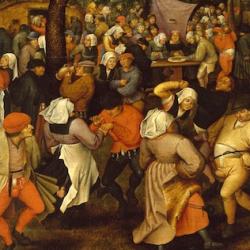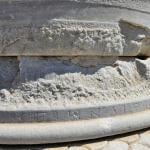John tells us that the inscription “Jesus the Nazarene, the King of the Jews” was placed above his head on the cross in Hebrew, Latin, and Greek (19:19-20). But this is just the culmination of a text that, though written in Greek, contains a number of cross-linguistic terms. Twice in chapter 19 John translates a Greek term into Hebrew/Aramic (vv. 13, 17), something he does only two other times in the gospel (5:2; 20:16).
Pilate, meanwhile, goes in and out of the Praetorium (18:28, 33), a Greek word borrowed from Latin, and a central point in debate is whether Caesar is going to be happy with Pilate (19:12).
That Jesus is the King of the Jews is proclaimed in all the relevant languages; that Jesus is crucified by a united humanity is evident in the trial scene as a whole – Pilate in his Praetorium, the Jews concerned for ritual impurity, both are described in John’s Greek.











